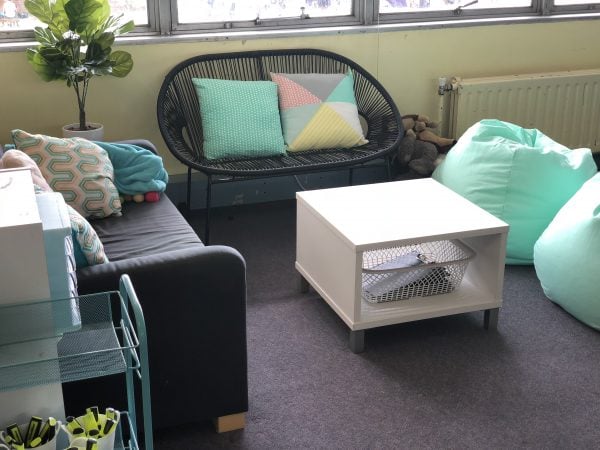Primary school teacher Vanessa Valois is excited.
The Year 5/6 teacher at North Ainslie Primary School in Canberra revamped her classroom before the term started, and is already seeing the results.
The principal at her school had told her staff about ‘flexible seating‘ – where the traditional layout and furniture of classrooms is abandoned and replaced with cushions, low tables, stools, arranged to encourage student comfort and group collaboration. The benefits of flexible seating were researched decades ago, and have been adopted in classrooms the world over by teachers adventurous enough to try it.
LISTEN: Apparently, kindergarten kids need full-on cyber safety lessons. A step too far, or necessary? We discuss, on our podcast for imperfect parents.
Forty years ago, US environmental psychologist Professor Robert Sommer said, ‘The teacher’s educational philosophy will be reflected in the layout of the classroom. The teacher should be able to justify the arrangement of desks and chairs on the basis of certain educational goals. There is no ideal classroom layout for all activities.”
Which makes sense because as most educators know, there’s also no uniform approach to teaching.
“With classrooms filled with a variety of learning needs these days, teachers need to adapt,” says Valois. Which is why 2018 was the year she decided to trial the technique. And so far, it’s a winner.


Top Comments
Fabulous idea. As long as teachers are not expected to foot the bill and schools are willing to pay for the furniture.